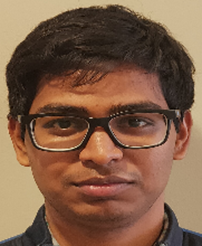Tutorial Chairs
Bala Krishna Maddali, GGS Indraprastha University, New Delhi, INDIA.
Christine Miyachi, Xerox Corporation, USA.
Doug Zuckerman, Perspecta Labs, USA.
Description
IEEE WF‐IoT 2020 Tutorials welcomes the general audience, researchers, scientists, engineers, developers, professionals, students and practitioners from academia and industry to learn about the state‐of‐the‐art research in IoT and related emerging areas. Tutorials complement the regular program with clear and focused coverage in new and emerging topics of IoT and its related areas.
The topics covered in the tutorials are highlighted as follows:
- Dispersed Computing and IoT Data Marketplaces using Jupiter and I3 enables the application developers to process IoT data efficiently using AI/ML pipelines over hybrid edge and cloud platforms. Smart cities explore data marketplaces to build IoT applications involving the community members. Marketplace middle-ware consists of a data broker and functional modules for managing the seller and buyer information, access control and authentication mechanisms, and a user interface.
- Solving IoT Business Problems Using Artificial intelligence (AI) and machine learning (ML) have become an essential part of the tool set, when used effectively these tools provide actionable insights that drive critical decisions and enable organizations to create exciting, new, and innovative products and services. This tutorial explains the machine learning concepts that can be applied to predictive analytics practice within cloud or edge levels.
- Internet of Things ‐ A Guided System Tour with Interoperability focus explains the fundamental principles, architecture and design of IoT system. The architecture components and the process of safe and secure collection of sensor data, analysis and findings that impacts the physical world will be discussed in detail.
- AI‐Stream digital transformation elaborates the role of Big data and sparse data challenge. Big data address the modeling and analyzing of high‐resolution and large‐scale volumes of data from wide variety of sources. Efficient Handling of BIG Data and its representation is an essential building block of digital transformation and Industry 4.0 Initiatives. Sparse representation and compressed sensing are the potential challenges in device power consumption, data redundancy, bandwidth, and data storage and transmission. This tutorial addresses the role sparsity in machine learning with application to Industry 4.0. Hands‐on demonstration on how sparse data analytics can overcome the challenges of big data will be elaborated.
- Secure IoT is the concern since the number of devices are growing and are interacting with real world infrastructure systems. IoT devices are affected by cyber‐attacks, such as the Mirai botnet. IoT Security Risks and Resilience‐ From Networks to Supply Chain explains the features of CPS and IoT security. Security research in IoT is dedicated to physical layer encryption and software security. This tutorial addresses the policy perspective and decisions for security and resilience in networked and connected systems of IoT including supply chain.
Tutorial Session: 4 Hour Program – 2 Hours On-Demand and 2 Hours Live
TUT-01: Dispersed Computing and IoT Data Marketplaces using Jupiter and I3
TUT-02: Solving IoT Business Problems Using AI and ML
Tutorial Session: 2 Hour Program – Live
TUT-03: Internet of Things Systems: A Guided Tour with Interoperability Focus
TUT-04: AI-STREAM Digital Transformation Challenge Event: The BIG Data vs Sparse Data Challenge
TUT-05: Understanding IoT Security Risks and Resilience: From Networks to Supply Chain
| IoT Tutorial Week Schedule: August 3rd – August 7th, 2020 | |||
| Date | Time | Title | Presenter |
| August 3rd
Monday |
11:00am – 1:00pm EDT
Plus: 2Hours of demand Lectures |
Tutorial TUT-01:
“Dispersed Computing and IoT Data Marketplaces using Jupiter and I3” |
Gowri Sankar Ramachandran, Quynh Nguyen, Sampad Mohanty and Bhaskar Krishnamachari,
Viterbi School of Engineering, University of Southern California, USA |
| August 4th
Tuesday |
11:00am – 1:00pm EDT
Plus: 2 Hours of demand Lectures |
Tutorial TUT-02: | Megan Smith Branch, CertNexus, NY, USA
and Trent Salvaggio, IoT Talent Consortium, Charleston, SC, USA |
| August 5th
Wednesday |
11:00am – 1:00pm EDT | Tutorial TUT-03:
“Internet of Things Systems: A Guided Tour with Interoperability Focus”
|
Milan Milenkovic,
IoTsense LLC, California, USA
|
| August 6th
Thursday |
11:00am – 1:00pm EDT | Tutorial TUT-04:
“AI-STREAM Digital Transformation Challenge Event: The BIG Data vs Sparse Data Challenge”
|
Ahmed Hag ElSafi and Rami Zewail,
Smart Empower Innovation Labs Inc., Edmonton, Alberta, Canada
|
| August 7th
Friday |
11:00am – 1:00pm EDT | Tutorial TUT-05: “Understanding IoT Security Risks and Resilience: From Networks to Supply Chain”
|
Junaid Farooq and Quanyan Zhu,
|
TUT-01: Dispersed Computing and IoT Data Marketplaces using Jupiter and I3
Presenters: Gowri Sankar Ramachandran, Quynh Nguyen, Sampad Mohanty and Bhaskar Krishnamachari, Viterbi School of Engineering, University of Southern California, USA
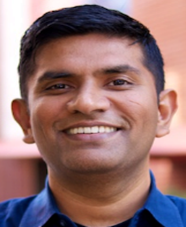 Bhaskar Krishnamachari is Professor of Electrical and Computer Engineering at the Viterbi School of Engineering at the University of Southern California. He is Director of the USC Viterbi Center for Cyber-Physical Systems and the Internet of Things (CCI). He has expertise in the design and analysis of algorithms and software for the internet of things, connected vehicles, distributed computing, machine learning, and blockchain technologies. He has co-authored more than 300 papers, and 2 textbooks, collectively cited more than 25000 times (per Google Scholar). He has received several best paper awards including at MobiCom and IPSN, the NSF CAREER Award and the ASEE Terman Award. In 2011, he was listed in MIT technology review magazine’s TR-35 list of top 35 innovators under the age of 35, and in 2015 was named one of Popular Science magazine’s “Brilliant 10”. He has been the co-founder of the Intelligent IoT Integrator (I3) consortium at USC, an effort to develop an open-source real-time data marketplace for smart communities, and his research group at USC has led the development of the Jupiter dispersed computing scheduler, an open-source tool for deploying complex computations over networks of computers.
Bhaskar Krishnamachari is Professor of Electrical and Computer Engineering at the Viterbi School of Engineering at the University of Southern California. He is Director of the USC Viterbi Center for Cyber-Physical Systems and the Internet of Things (CCI). He has expertise in the design and analysis of algorithms and software for the internet of things, connected vehicles, distributed computing, machine learning, and blockchain technologies. He has co-authored more than 300 papers, and 2 textbooks, collectively cited more than 25000 times (per Google Scholar). He has received several best paper awards including at MobiCom and IPSN, the NSF CAREER Award and the ASEE Terman Award. In 2011, he was listed in MIT technology review magazine’s TR-35 list of top 35 innovators under the age of 35, and in 2015 was named one of Popular Science magazine’s “Brilliant 10”. He has been the co-founder of the Intelligent IoT Integrator (I3) consortium at USC, an effort to develop an open-source real-time data marketplace for smart communities, and his research group at USC has led the development of the Jupiter dispersed computing scheduler, an open-source tool for deploying complex computations over networks of computers.
 Gowri Sankar Ramachandran is a Senior Research Associate at Center for Cyber-Physical Systems and the Internet-of-Things (CCI) at University of Southern California. His research interests are focused on Internet-of-Things (IoT). In particular, he works on the design, implementation, and deployment of energy-efficient IoT applications. He has over five years of experience in middleware for the IoT with strong expertise in run-time reconfiguration and management of IoT applications across all layers of the stack. He is also specialized in low power wireless communication and was involved in the deployment of IoT applications and testbeds using technologies such as LoRa, IEEE-802.15.4e, and WiFi. Lately, Gowri is exploring blockchain technology and its application in IoT. In 2017, Gowri and his team have received the second prize in LoRa Alliance Global IoT Challenge for their deployment of smart medical fridges in Kikwit, DR Congo. And, he has also won best paper awards at WICSA/CompArch, BigMM, Mobiquitous, and AFRICATEK. Gowri is also involved in the USC’s Intelligent Internet-of-Things Integrator (I3) consortium, which is a real-time data marketplace for smart cities.
Gowri Sankar Ramachandran is a Senior Research Associate at Center for Cyber-Physical Systems and the Internet-of-Things (CCI) at University of Southern California. His research interests are focused on Internet-of-Things (IoT). In particular, he works on the design, implementation, and deployment of energy-efficient IoT applications. He has over five years of experience in middleware for the IoT with strong expertise in run-time reconfiguration and management of IoT applications across all layers of the stack. He is also specialized in low power wireless communication and was involved in the deployment of IoT applications and testbeds using technologies such as LoRa, IEEE-802.15.4e, and WiFi. Lately, Gowri is exploring blockchain technology and its application in IoT. In 2017, Gowri and his team have received the second prize in LoRa Alliance Global IoT Challenge for their deployment of smart medical fridges in Kikwit, DR Congo. And, he has also won best paper awards at WICSA/CompArch, BigMM, Mobiquitous, and AFRICATEK. Gowri is also involved in the USC’s Intelligent Internet-of-Things Integrator (I3) consortium, which is a real-time data marketplace for smart cities.
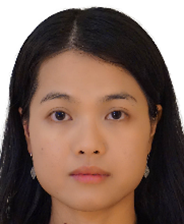 Quynh Nguyen is a postdoctoral researcher at autonomous networks research group at University of Southern California. Her research interest includes distributed computing, network optimization, and vehicular networks. Quynh has been involved in the development of Jupiter, which is a dispersed computing framework to deploy complex computations over dispersed compute platforms.
Quynh Nguyen is a postdoctoral researcher at autonomous networks research group at University of Southern California. Her research interest includes distributed computing, network optimization, and vehicular networks. Quynh has been involved in the development of Jupiter, which is a dispersed computing framework to deploy complex computations over dispersed compute platforms.
Sampad Mohanty is a PhD candidate at the autonomous networks research group at the University of Southern California. His research interests include Internet of Things, edge computing and machine learning.
Abstract: Cities around the world are starting to deploy IoT applications to monitor and control the environment remotely. Covering a city with IoT deployments involving a single organization is economically expensive while introducing management complexity. Data marketplaces are being developed to help cities create ecosystems around IoT where application developers can buy real-time data from device owners. Such a model minimizes the management complexity while allowing the application developers to consume data from multiple devices and neighborhoods easily. In this tutorial, we present I3, an open-source real-time IoT data marketplace which simplifies the process of posting, finding, and subscribing to IoT data products. While I3 simplifies data collection for application developers, they still need to process
and analyze the data to make informed decisions. We also present Jupiter, a dispersed computing framework that allows application developers to process IoT data efficiently using AI/ML pipelines over hybrid edge and cloud platforms.
TUT-02: Solving IoT Business Problems Using AI and ML
Presenters: Megan Smith Branch, CertNexus, NY, USA
Trent Salvaggio IoT Talent Consortium, Charleston, SC, USA
 Megan Smith Branch is Chief Operating and Product Officer for CertNexus, a global emerging tech certification startup based in Rochester, NY. Megan oversees the development, delivery and product engagement of CertNexus’ emerging technology certification solutions in cybersecurity, IoT, AI and data science. Her key objective is to create, promote and maintain high stakes certifications within emerging technologies so that organizations can accelerate technology initiatives through the building and validation of knowledge and skills. Megan sits on the board of the California Technology Council, is a member of the IoT Talent Consortium and Cybersecurity Credentials Collaborative (C3), NICE Training and Certification Working Group.
Megan Smith Branch is Chief Operating and Product Officer for CertNexus, a global emerging tech certification startup based in Rochester, NY. Megan oversees the development, delivery and product engagement of CertNexus’ emerging technology certification solutions in cybersecurity, IoT, AI and data science. Her key objective is to create, promote and maintain high stakes certifications within emerging technologies so that organizations can accelerate technology initiatives through the building and validation of knowledge and skills. Megan sits on the board of the California Technology Council, is a member of the IoT Talent Consortium and Cybersecurity Credentials Collaborative (C3), NICE Training and Certification Working Group.
 Trent Salvaggio is the Executive Director of the Internet of Things (IoT) Talent Consortium Trent brings together leaders from the most forward-thinking organizations to inspire, create, and grow the institutions needed to drive digital transformation across industries for the betterment of business and society. Trent is a speaker, researcher, author, professor, business executive and award-winning innovation leader who is recognized as an expert in leadership, digital transformation, Industry 4.0, and the future of work. He is a trusted advisor to Fortune 500 companies, academic institutions and government entities. Trent holds his MBA in Business administration and Management and his PhD in Business Administration. Trent is Vice Chair of the Board for Odyssey Online Learning, a tuition free, state-authorized, online public charter high school in South Carolina, is an adjunct professor at Trident University International and has taught at Embry-Riddle Aeronautical University and at the College of Charleston.
Trent Salvaggio is the Executive Director of the Internet of Things (IoT) Talent Consortium Trent brings together leaders from the most forward-thinking organizations to inspire, create, and grow the institutions needed to drive digital transformation across industries for the betterment of business and society. Trent is a speaker, researcher, author, professor, business executive and award-winning innovation leader who is recognized as an expert in leadership, digital transformation, Industry 4.0, and the future of work. He is a trusted advisor to Fortune 500 companies, academic institutions and government entities. Trent holds his MBA in Business administration and Management and his PhD in Business Administration. Trent is Vice Chair of the Board for Odyssey Online Learning, a tuition free, state-authorized, online public charter high school in South Carolina, is an adjunct professor at Trident University International and has taught at Embry-Riddle Aeronautical University and at the College of Charleston.
Abstract: IoT harvests a proliferation of data. Artificial intelligence (AI) and machine learning (ML) have become an essential part of the toolset for many organizations. When used effectively, these tools provide actionable insights that drive critical decisions and enable organizations to create exciting, new, and innovative products and services. This tutorial shows you how to identify business problems that can implement machine learning to drive solutions, follow an ML workflow to form the problem within ML, and select appropriate toolsets to use.
TUT-03: Internet of Things Systems: A Guided Tour with Interoperability Focus
Presenter: Milan Milenkovic, IoTsense LLC, CA, USA
 Milan Milenkovic is the founder of IoTsense LLC, an IoT technology development and strategy consultancy in the San Francisco Bay Area. As a principal engineer in Intel Labs and in Intel’s IoT Business Unit, he led a number of projects involving IoT system architecture and implementation, smart buildings and energy management, cloud and grid computing. Prior to Intel, he worked at IBM and in academia conducting research and leading prototype designs of a variety of emerging technology projects. Milan Milenkovic earned a M.Sc. degree in Computer Science from Georgia Institute of Technology and a Ph.D. in Electrical and Computer Engineering from the University of Massachusetts at Amherst. He has given invited talks at academic and industrial conferences and has authored a number of journal and conference papers, industry technical reports, standards, and holds U.S. and international patents. He is the author of the published book “Internet of Things: Concepts and System Design” (Springer). His prior books include two editions of a college text “Operating Systems: Concepts and Design” (McGraw-Hill) with several translations and international editions, a monograph on distributed database systems, and an IEEE tutorial on multimedia systems. He is a Fulbright Scholar, ACM Distinguished Engineer, and an IEEE Senior Member.
Milan Milenkovic is the founder of IoTsense LLC, an IoT technology development and strategy consultancy in the San Francisco Bay Area. As a principal engineer in Intel Labs and in Intel’s IoT Business Unit, he led a number of projects involving IoT system architecture and implementation, smart buildings and energy management, cloud and grid computing. Prior to Intel, he worked at IBM and in academia conducting research and leading prototype designs of a variety of emerging technology projects. Milan Milenkovic earned a M.Sc. degree in Computer Science from Georgia Institute of Technology and a Ph.D. in Electrical and Computer Engineering from the University of Massachusetts at Amherst. He has given invited talks at academic and industrial conferences and has authored a number of journal and conference papers, industry technical reports, standards, and holds U.S. and international patents. He is the author of the published book “Internet of Things: Concepts and System Design” (Springer). His prior books include two editions of a college text “Operating Systems: Concepts and Design” (McGraw-Hill) with several translations and international editions, a monograph on distributed database systems, and an IEEE tutorial on multimedia systems. He is a Fulbright Scholar, ACM Distinguished Engineer, and an IEEE Senior Member.
Abstract: This tutorial presents an overview of the foundational principles, architecture, and design considerations in IoT systems. It includes coverage and analysis of key IoT system components including sensors, edge, fog, communications, cloud, data processing with analytics ML and AI, security and management. In addition to the component analysis, major emphasis is on the system integration and how the various parts are put together and function as an ensemble to carry out the common objectives. The tutorial is designed to provide a balanced treatment at roughly equal level of depth for all covered topics, based on the presenter’s book “Internet of Things: Concepts and System Design” (Springer 2020). The presentation approach is function and purpose driven in the sense that each component is described in terms of the role it fulfills in the system’s overall mission. That is to safely and securely collect sensor data, analyze, and act on the findings in a manner that impacts the physical world. An important focus of the tutorial is to highlight the importance of and the need for semantic interoperability in IoT systems. We describe how this requirement is different from the world-wide web and why it is necessary to enable big IoT data aggregations for meaningful insights and processing by ML and AI techniques. Interoperability also provides the ability to (re)use the collected data – arguably the most important asset of an IoT system – when changing an implementation or migrating to another platform. The structure of information and data models and metadata representations commonly used for the purpose are described and their salient features are identified. Several examples of IoT object definitions are provided from the evolving IoT standards to illustrate their similarities and differences. Different levels of pragmatic interoperability across domains and specifications are defined and ways for achieving them in practice are outlined.
TUT-04: AI-STREAM Digital Transformation Challenge Event: The BIG Data vs Sparse Data Challenge
Presenters: Ahmed Hag ElSafi and Rami Zewail, Smart Empower Innovation Labs Inc., Edmonton, Alberta, Canada
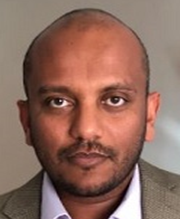 Ahmed Hag Elsafi holds a BSc and a MSc of Electronics and Communications Engineering, Arab Academy for Science and Technology, 2002 and 2004 respectively. He has 15 years of research and industrial development experience in areas of embedded systems and machine learning, with over 10 year in the Oil & Gas industry. He has published more than eighteen papers in the areas of IOT security, biometrics, machine learning, and medical image processing. He is currently a co-founder and consultant at Smart Empower Innovation Labs Inc., a Canadian-based R&D consultancy specialized in fields of machine learning and embedded systems. Mr. Hag-ElSafi is a member the Smart City Alliance in Alberta, Canada and the Association of Professional Engineers and Geoscientists of Alberta (APEGA). He has also served as technical reviewer for Apress -Springer, NY,US.
Ahmed Hag Elsafi holds a BSc and a MSc of Electronics and Communications Engineering, Arab Academy for Science and Technology, 2002 and 2004 respectively. He has 15 years of research and industrial development experience in areas of embedded systems and machine learning, with over 10 year in the Oil & Gas industry. He has published more than eighteen papers in the areas of IOT security, biometrics, machine learning, and medical image processing. He is currently a co-founder and consultant at Smart Empower Innovation Labs Inc., a Canadian-based R&D consultancy specialized in fields of machine learning and embedded systems. Mr. Hag-ElSafi is a member the Smart City Alliance in Alberta, Canada and the Association of Professional Engineers and Geoscientists of Alberta (APEGA). He has also served as technical reviewer for Apress -Springer, NY,US.
 Rami Zewail received a BSc. and MSc. In Electronics & Communications Engineering, Arab Academy for Science and Technology, Egypt, in 2002 and 2004 respectively. And a PhD degree in Electrical and Computer Engineering, University of Alberta, Canada, in 2010. He has over 15 years of academic and industrial R&D experience in areas of embedded computing, machine learning, and signal processing. Dr Zewail’s research experience spans different fields such as Energy industry, Computer vision, biomedical, BlockChain, and IoT. Dr. Zewail has over 12 years of R&D experience in Oil &Gas sector. He has contributed to the scientific community with a patent and over 20 publications in areas of embedded computing, machine learning, and statistical modeling. Currently, he is co-founder of Smart Empower Innovations Labs Inc., an R&D consultancy specialized in fields of embedded systems and machine learning. Dr. Zewail is a member of the Institute of Electrical and Electronics Engineers (IEEE), the Association of Professional Engineers & Geoscientists (APEGA), The Canadian Association for Artificial Intelligence. He also has served as a reviewer for the Journal of Electronics Imaging, Journal of Optical Engineering for the SPIE society, and Apress Media LLC-Springer.
Rami Zewail received a BSc. and MSc. In Electronics & Communications Engineering, Arab Academy for Science and Technology, Egypt, in 2002 and 2004 respectively. And a PhD degree in Electrical and Computer Engineering, University of Alberta, Canada, in 2010. He has over 15 years of academic and industrial R&D experience in areas of embedded computing, machine learning, and signal processing. Dr Zewail’s research experience spans different fields such as Energy industry, Computer vision, biomedical, BlockChain, and IoT. Dr. Zewail has over 12 years of R&D experience in Oil &Gas sector. He has contributed to the scientific community with a patent and over 20 publications in areas of embedded computing, machine learning, and statistical modeling. Currently, he is co-founder of Smart Empower Innovations Labs Inc., an R&D consultancy specialized in fields of embedded systems and machine learning. Dr. Zewail is a member of the Institute of Electrical and Electronics Engineers (IEEE), the Association of Professional Engineers & Geoscientists (APEGA), The Canadian Association for Artificial Intelligence. He also has served as a reviewer for the Journal of Electronics Imaging, Journal of Optical Engineering for the SPIE society, and Apress Media LLC-Springer.
Abstract: Efficient Secure Handling of BIG Data and EDGE computing are now receiving much attention for being essential building blocks in any digital transformation and Industry 4.0 Initiatives. Concepts of sparse learning, embedded machine learning, and blockchain are emerging techniques that have great potentials to meet challenges such as security, device power consumption, data redundancy, bandwidth, and data storage and transmission. In this hands-on tutorial, the speakers would present an overview of the role sparsity in machine learning with application to Industry 4.0. The tutorial event would also include hands-on demonstration on how Sparse data analytics can help overcome some of the challenges in BIG DATA. The tutorial will be concluded with the release of a digital transformation competition with the theme “BIG Data vs Sparse data”. The competition would be open to participants through AI-STREAM: A Data science competition platform dedicated to Digital Transformation and Industry 4.0 Challenges.
TUT-05: Understanding IoT Security Risks and Resilience: From Networks to Supply Chain
Presenters: Junaid Farooq and Quanyan Zhu, New York University, NY, USA
Junaid Farooq is a Ph.D. Candidate at the Department of Electrical & Computer  Engineering, New York University (NYU) Tandon School of Engineering. His research interests are in the design of secure and resilient IoT-enabled smart infrastructure systems & networks. He received a B.S. degree in Electrical Engineering from the National University of Sciences & Technology (NUST) and the M.S. degree in Electrical Engineering from the King Abdullah University of Science & Technology (KAUST) in 2013 and 2015 respectively. He was then a researcher at the Qatar Mobility Innovations Center (QMIC) in Doha, Qatar. He is a recipient of several awards including the President’s Gold Medal from NUST, the King Abdullah Fellowship award from KAUST, the Ernst Weber Fellowship from NYU, and the Athanasios Papoulis award from NYU.
Engineering, New York University (NYU) Tandon School of Engineering. His research interests are in the design of secure and resilient IoT-enabled smart infrastructure systems & networks. He received a B.S. degree in Electrical Engineering from the National University of Sciences & Technology (NUST) and the M.S. degree in Electrical Engineering from the King Abdullah University of Science & Technology (KAUST) in 2013 and 2015 respectively. He was then a researcher at the Qatar Mobility Innovations Center (QMIC) in Doha, Qatar. He is a recipient of several awards including the President’s Gold Medal from NUST, the King Abdullah Fellowship award from KAUST, the Ernst Weber Fellowship from NYU, and the Athanasios Papoulis award from NYU.
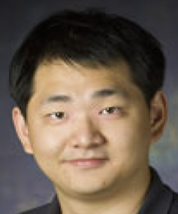 Quanyan Zhu is an associate professor in the Department of Electrical and Computer Engineering at New York University. He received the B. Eng. in Honors Electrical Engineering with distinction from McGill University in 2006, the M.A.Sc. from University of Toronto in 2008, and the Ph.D. from the University of Illinois at Urbana Champaign (UIUC) in 2013. From 2013- 2014, he was a postdoctoral research associate at the Department of Electrical Engineering, Princeton University. He is a recipient of many awards including NSF CAREER Award, NSERC Canada Graduate Scholarship (CGS), Mavis Future Faculty Fellowships, and NSERC Postdoctoral Fellowship (PDF). His current research interests include resilient and secure interdependent critical infrastructures, Internet of things, cyber-physical systems, machine learning, network optimization and control.
Quanyan Zhu is an associate professor in the Department of Electrical and Computer Engineering at New York University. He received the B. Eng. in Honors Electrical Engineering with distinction from McGill University in 2006, the M.A.Sc. from University of Toronto in 2008, and the Ph.D. from the University of Illinois at Urbana Champaign (UIUC) in 2013. From 2013- 2014, he was a postdoctoral research associate at the Department of Electrical Engineering, Princeton University. He is a recipient of many awards including NSF CAREER Award, NSERC Canada Graduate Scholarship (CGS), Mavis Future Faculty Fellowships, and NSERC Postdoctoral Fellowship (PDF). His current research interests include resilient and secure interdependent critical infrastructures, Internet of things, cyber-physical systems, machine learning, network optimization and control.
Abstract: The widespread adoption of the IoT is becoming indispensable in all industry verticals such as in energy, transportation, communications, emergency services, public administration, defense, etc., due to their burgeoning scale and complexity. However, the cyber-physical integration is also opening doors for malicious cyber activity to sabotage their performance and/or operation. Furthermore, the IoT is composed of various different interconnected components that may be designed, manufactured, and operated by different entities located in different parts of the world. This adds an additional threat vector relating to the supply chain of the IoT ecosystem with possible attacks from backdoor and stealthy channels. Since the incapacitation or destruction of infrastructure systems can have a debilitating effect on national security, economy, public health, and safety, it is imperative to understand risks in IoT systems and take necessary steps to mitigate them. This tutorial is aimed at identifying and categorizing the different types of security risks in IoT systems starting from the network layer to the supply chain layer. It will also provide an overview of the potential strategies that can be employed to avoid the possibility of large scale coordinated attacks from network entities or supply chain actors. Finally, an overview of the possible research directions relating to the security and resilience of IoT systems will be provided.



